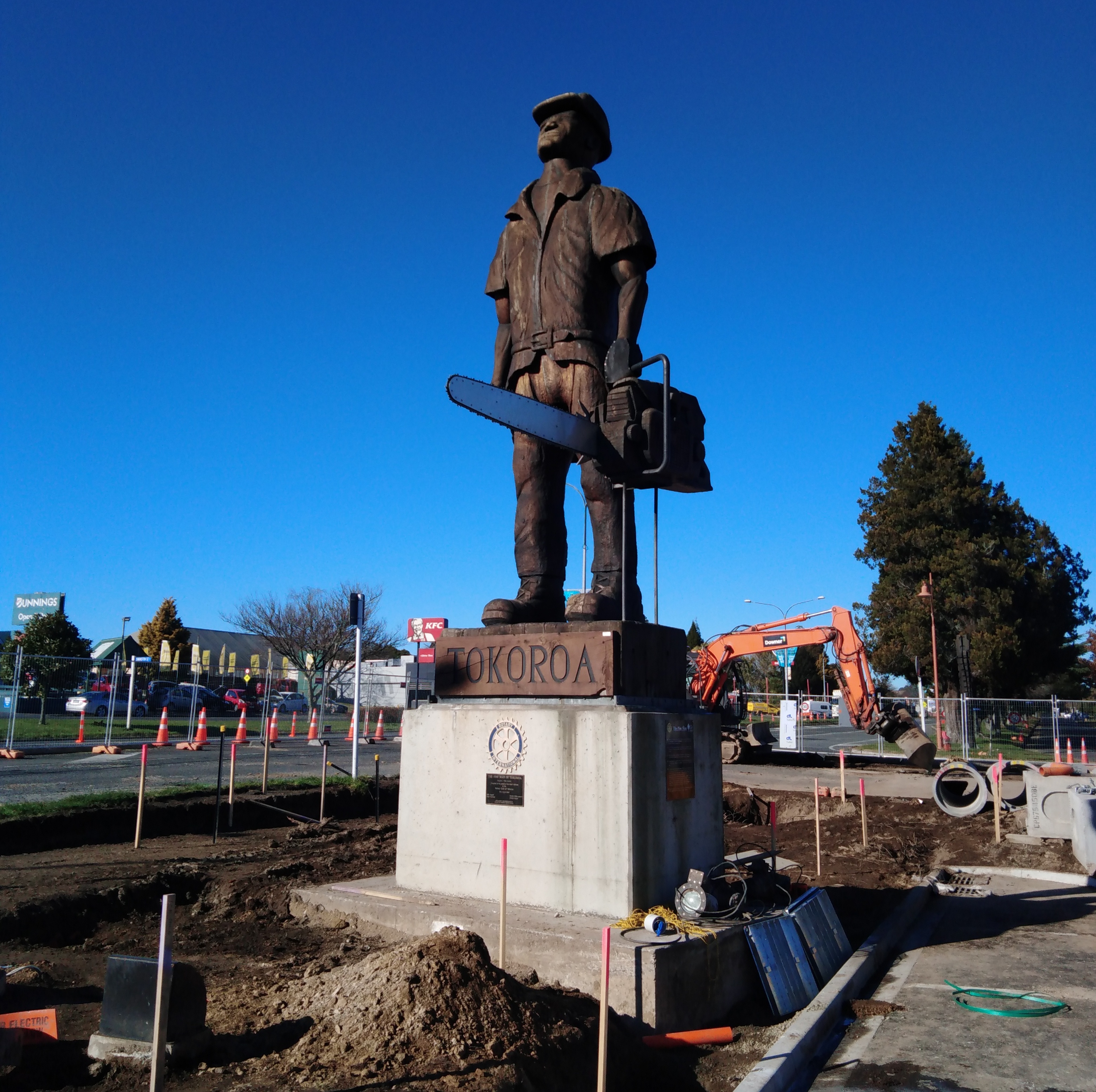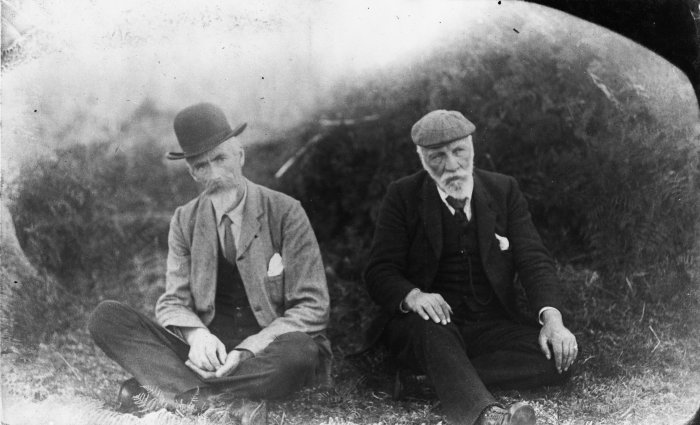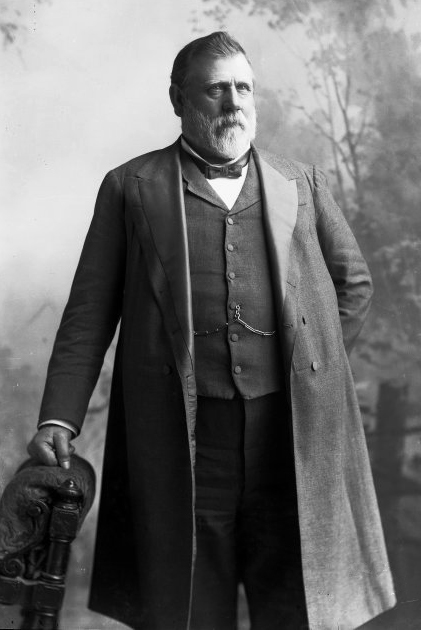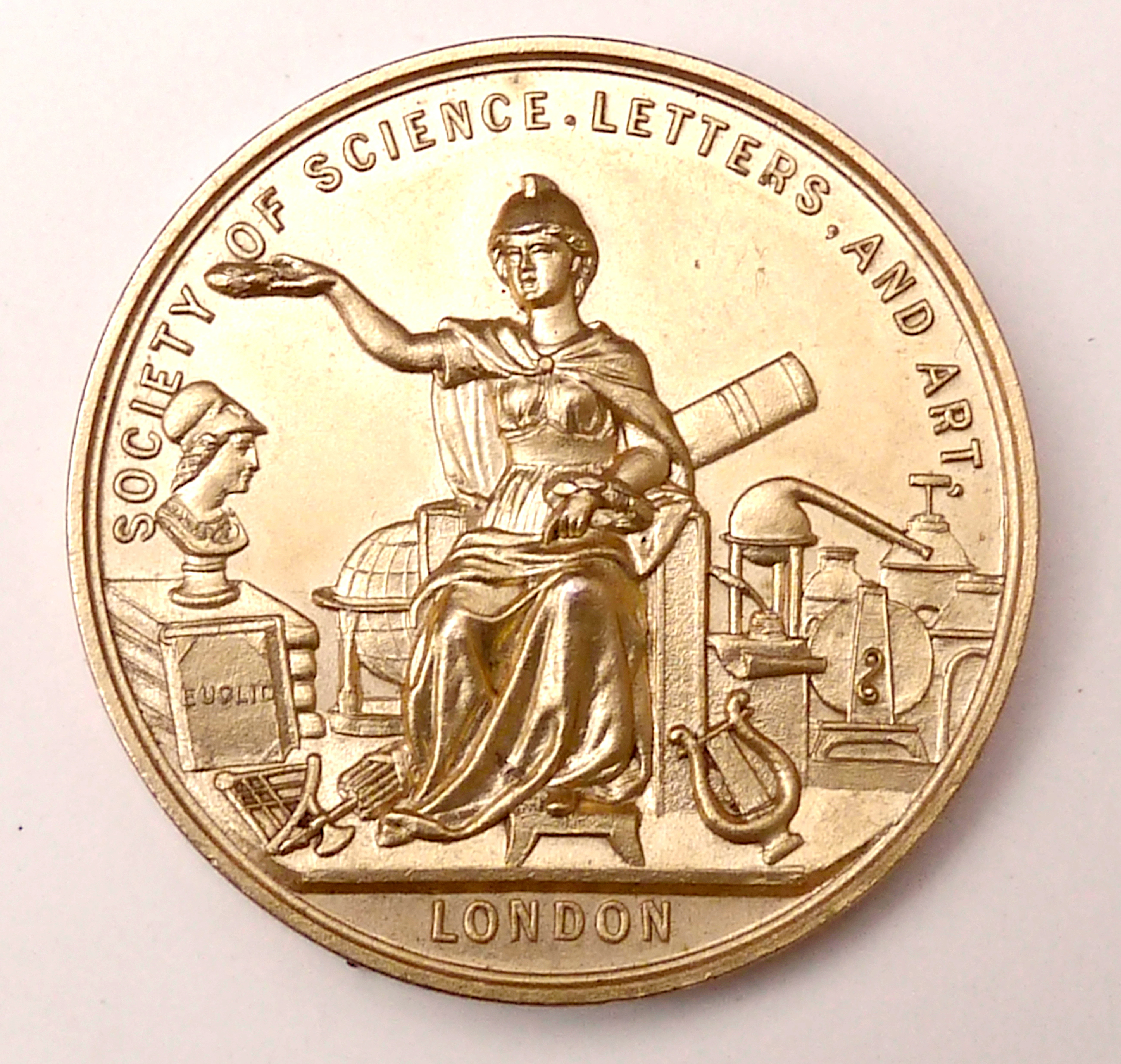|
E. R. Tregear
Edward Robert Tregear , Ordre des Palmes académiques (1846–1931) was a New Zealand public servant and scholar. He was an architect of New Zealand's advanced social reforms and progressive labour legislation during the 1890s. Biography He was born in Southampton, England, on 1 May 1846, the son of Captain William Henry Tregear, a descendant of an old Cornish family. Tregear was educated in private schools and trained as a civil engineer. He arrived in Auckland in June 1863 and took a position as a surveyor. This work brought him into close contact with the Māori, and he began to study their language and culture. Poverty forced Tregear to enlist in the Auckland Engineer Volunteers. He saw action against the Māori in the Tauranga area and was awarded the New Zealand War Medal. Between 1869 and 1873 he worked as a surveyor on the goldfields at Thames and Coromandel and on Māori lands near Tokoroa. His investments in gold mining and saw milling ventures proved disastrous, and ... [...More Info...] [...Related Items...] OR: [Wikipedia] [Google] [Baidu] |
Wellington City Council
Wellington City Council is a territorial authority in New Zealand, governing the country's capital city Wellington, and ''de facto'' second-largest city (if the commonly considered parts of Wellington, the Upper Hutt, Porirua, Lower Hutt and often the Kapiti Coast, are taken into account; these, however have independent councils rather than a supercity governance like Auckland, and so Wellington City is legally only third-largest city by population, behind Auckland and Christchurch). It consists of the central historic town and certain additional areas within the Wellington metropolitan area, extending as far north as Linden and covering rural areas such as Mākara and Ohariu. The city adjoins Porirua in the north and Hutt City in the north-east. It is one of nine territorial authorities in the Wellington Region. Wellington attained city status in 1886. The settlement had become the colonial capital and seat of government by 1865, replacing Auckland. Parliament officia ... [...More Info...] [...Related Items...] OR: [Wikipedia] [Google] [Baidu] |
Tokoroa
Tokoroa ( mi, Te Kaokaoroa o Pātetere) is the fifth-largest town in the Waikato region of the North Island of New Zealand and largest settlement in the South Waikato District. Located 30 km southwest of Rotorua, close to the foot of the Mamaku Ranges, it is midway between Taupo and Hamilton on State Highway 1. History and culture Early history Tokoroa was the name of a chief of the Ngāti Kahupungapunga, who was slain by Raukawa during the siege of Pōhaturoa, a volcanic plug adjacent to Atiamuri, 27 km south of Tokoroa. This battle took place around 1600 as the Ngāti Raukawa moved into the southern Waikato. The name ''Tokoroa'' first appeared on the early maps of the 1860s, although this was for an area 50 km north east of today's Tokoroa. Foundations, growth and decline Tokoroa is one of the most recent towns in New Zealand history. The township was established (circa) 1917 by the Matarawa Land Company as a potential farming area; a few families had al ... [...More Info...] [...Related Items...] OR: [Wikipedia] [Google] [Baidu] |
Polynesian Society
The Polynesian Society is a non-profit organisation based at the University of Auckland, New Zealand, dedicated to the scholarly study of the history, ethnography, and mythology of Oceania. History The society was co-founded in 1892 by Percy Smith and Edward Tregear, largely in response to a conviction, widely held at the time, that the Māori and other Polynesian peoples were a dying race. Smith and his friends hoped that it would help to preserve the traditional lore of the Māori before it disappeared and provide scholars with a forum for learned discussion of their ethnographic research (Byrnes 2006). The initial membership of the society was 112, which had grown to 1,300 by 1965. Presidents have included bishops H. W. and W. L. Williams; James Pope, Edward Tregear, Percy Smith, Elsdon Best, William Skinner, Sir Āpirana Ngata, Harry Skinner, J. M. McEwen, Professor Sir Hugh Kawharu and Dame Joan Metge. The present president is Dr Richard Benton. Until her death in ... [...More Info...] [...Related Items...] OR: [Wikipedia] [Google] [Baidu] |
Department Of Labour (New Zealand)
The Department of Labour ( mi, Te Tari Mahi) was a New Zealand public sector organisation tasked with improving the performance of the labour market and, through this, strengthening the economy and increasing the standard of living. It was replaced with the Ministry of Business, Innovation and Employment on 1 July 2012. History The Department was established under the Liberal Government of New Zealand in 1891 as the Bureau of Industries with Edward Treager as its sole employee. The following year, when W. Pember Reeves was appointed the first Minister of Labour, the department changed its name to the Department of Labour. The Labour Department Act 1893 defined the general duties of and powers of the department, which were to administer the labour laws, acquire and disseminate knowledge of occupations with a view to improving relations between employers and workers, and collect and publish information on industries and rates of wages. Over time, the functions of the departme ... [...More Info...] [...Related Items...] OR: [Wikipedia] [Google] [Baidu] |
New Zealand Liberal Party
The New Zealand Liberal Party was the first organised political party in New Zealand. It governed from 1891 until 1912. The Liberal strategy was to create a large class of small land-owning farmers who supported Liberal ideals, by buying large tracts of Māori land and selling it to small farmers on credit. The Liberal Government also established the basis of the later welfare state, with old age pensions, developed a system for settling industrial disputes, which was accepted by both employers and trade unions. In 1893 it extended voting rights to women, making New Zealand the first country in the world to enact universal adult suffrage. New Zealand gained international attention for the Liberal reforms, especially how the state regulated labour relations. It was innovating in the areas of maximum hour regulations and compulsory arbitration procedures. Under the Liberal administration the country also became the first to implement a minimum wage and to give women the right ... [...More Info...] [...Related Items...] OR: [Wikipedia] [Google] [Baidu] |
Richard Reeves (New Zealand)
Richard Harman Jeffares Reeves (1836 – 1 June 1910) was a New Zealand politician of the Liberal Party. He was acting Speaker of the Legislative Council in 1905. Biography Early life and career Reeves was born in Enniscorthy, County Wexford, Ireland, in 1836. He was educated at Barrow Grammar School, and subsequently at Tarvin, Cheshire. In early youth he went to sea and in 1852 he left England for Sydney, New South Wales. He worked in various trades, including mining, store keeping, cattle dealing and auctioneering. Political career Whilst absent on a visit to Australia in 1866, he was elected member for the Hokitika electorate in the Canterbury Provincial Council, but resigned on his return to New Zealand, as he found that pressure of business prevented him from taking his seat. His membership lasted from 4 July to 20 October 1866. When the West Coast was separated from Canterbury, Reeves was elected onto the Westland County for the Hokitika riding (May 1869 – J ... [...More Info...] [...Related Items...] OR: [Wikipedia] [Google] [Baidu] |
John Ballance
John Ballance (27 March 1839 – 27 April 1893) was an Irish-born New Zealand politician who was the 14th premier of New Zealand, from January 1891 to April 1893, the founder of the Liberal Party (the country's first organised political party), and a Georgist. In 1891 he led his party to its first election victory, forming the first New Zealand government along party lines, but died in office three years later. Ballance supported votes for women. He also supported land reform, though at considerable cost to Māori. Early life The eldest son of Samuel Ballance, a tenant farmer, and Mary McNiece, Ballance was born on 27 March 1839 in Glenavy in County Antrim in Ireland. He was educated at a national school, then apprenticed to an ironmonger in Belfast. He later became a clerk in a wholesale ironmonger's house in Birmingham, where he married. Ballance was highly interested in literature, and was known for spending vast amounts of time reading books. He also became interested in ... [...More Info...] [...Related Items...] OR: [Wikipedia] [Google] [Baidu] |
Society Of Science, Letters And Art
The Society of Science, Letters and Art, also known as the Society of Science or SSLA, was a ''soi-disant'' learned society which flourished between 1882 and 1902. Dr Edward Albert Sturman, M.A., F.R.S.L., owned and ran the Society for his own financial benefit from his house at Holland Road in Kensington, London. He took the title of Hon. Secretary and worked under the name of the Irish baronet Sir Henry Valentine Goold, who was given the title of President and chairman, until Goold died in 1893. The Society sold the privilege of wearing academic dressThe hood was in the simple shape, of black silk, lined with lavender silk and edged with white cord, according to: and using the postnominal letters F.S.Sc. to both eminent and ordinary people around the world, without the obligation to sit an examination or to submit papers. Many members of legitimate learned societies were duped into thinking that they were being offered fellowships by a department of their own respected inst ... [...More Info...] [...Related Items...] OR: [Wikipedia] [Google] [Baidu] |
Royal Historical Society
The Royal Historical Society, founded in 1868, is a learned society of the United Kingdom which advances scholarly studies of history. Origins The society was founded and received its royal charter in 1868. Until 1872 it was known as the Historical Society. In 1897, it merged with (or absorbed) the Camden Society, founded in 1838. In its origins, and for many years afterwards, the society was effectively a gentlemen's club. However, in the middle and later twentieth century the RHS took on a more active role in representing the discipline and profession of history. Current activities The society exists to promote historical research in the United Kingdom and worldwide, representing historians of all kinds. Its activities primarily concern advocacy and policy research, training, publishing, grants and research support, especially for early career historians, and awards and professional recognition. It provides a varied programme of lectures and one-day and two-day conferences and ... [...More Info...] [...Related Items...] OR: [Wikipedia] [Google] [Baidu] |
Royal Geographical Society
The Royal Geographical Society (with the Institute of British Geographers), often shortened to RGS, is a learned society and professional body for geography based in the United Kingdom. Founded in 1830 for the advancement of geographical sciences, the Society has 16,000 members, with its work reaching the public through publications, research groups and lectures. The Society was founded in 1830 under the name ''Geographical Society of London'' as an institution to promote the 'advancement of geographical science'. It later absorbed the older African Association, which had been founded by Sir Joseph Banks in 1788, as well as the Raleigh Club and the Palestine Association. In 1995 it merged with the Institute of British Geographers, a body for academic geographers, to officially become the Royal Geographical Society ''with IBG''. The society is governed by its Council, which is chaired by the Society's President, according to a set of statutes and standing orders. The members ... [...More Info...] [...Related Items...] OR: [Wikipedia] [Google] [Baidu] |
Pre-Māori Settlement Of New Zealand Theories
Since the early 1900s the theory that Polynesians (who became the Māori) were the first ethnic group to settle in New Zealand (first proposed by Captain James Cook) has been dominant among archaeologists and anthropologists. Before that time and until the 1920s, however, a small group of prominent anthropologists proposed that the Moriori people of the Chatham Islands represented a pre-Māori group of people from Melanesia, who once lived across all of New Zealand and were replaced by the Māori."Imagining Moriori: A history of ideas of a people in the twentieth century" Jacinta Blank, MA Thesis, 2007 While this idea lost favour among academics, it was widely and controversially incorporated into school textbooks during the 20th century. In more ... [...More Info...] [...Related Items...] OR: [Wikipedia] [Google] [Baidu] |
Friedrich Max Muller
Friedrich may refer to: Names * Friedrich (surname), people with the surname ''Friedrich'' * Friedrich (given name), people with the given name ''Friedrich'' Other * Friedrich (board game), a board game about Frederick the Great and the Seven Years' War * ''Friedrich'' (novel), a novel about anti-semitism written by Hans Peter Richter * Friedrich Air Conditioning, a company manufacturing air conditioning and purifying products *, a German cargo ship in service 1941-45 See also * Friedrichs (other) * Frederick (other) * Nikolaus Friedreich {{disambig ja:フリードリヒ ... [...More Info...] [...Related Items...] OR: [Wikipedia] [Google] [Baidu] |






